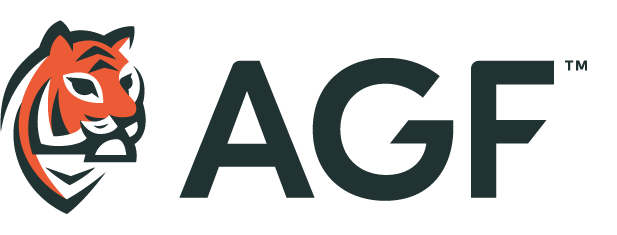
Investor’s Guide to GLP-1 Drugs: The Goods on Packaging
Author: John Kratochwil
August 8, 2024
In the last entry of our four-part series on GLP-1 drugs and their impact, AGF Investments analyst John Kratochwil discusses potential emerging opportunities for the packaging industry.
While the long-term efficacy of glucagon-like peptide-1 (GLP-1) drugs in the treatment of obesity remains to be determined, studies to date have shown that those who use GLP-1s report a dramatic decrease in the consumption of alcohol, carbonated soft drinks and sweet/salty snacks. Such shifts in eating patterns could be part of a significant decrease in consumers’ caloric intake –with perhaps dramatic effects on the food industry, as my colleague Abhishek Ashok discussed in a previous post.
Yet it is not just the food ecosystem that could have to adapt to wider GLP-1 use. So, too, could the industry that produces the packages food comes in.
The snack attack in retreat
A research report published by Morgan Stanley in April suggested that people who use GLP-1 drugs not only consume less snack foods, but also snack less frequently: on average, users report a decline in “snack events” from 3.5 a day to just two. Sweet, salty, greasy and highly processed foods often fall out of favour among GLP-1 consumers.
We would expect, then, that because snacking and salty/sweet food intake seem poised to decline, consumption shifts would most clearly and adversely impact the so-called “middle” of the grocery store, occupied largely by salty/sweet/processed items that typically come in cardboard boxes, metal cans or plastic containers. That would probably be a net negative for the packaging industry, in the short term at least, but it could well be offset by some positives over the longer term.
Smaller to the rescue?
Dieters and the dieting industry have long faced a singular challenge when it comes to what should be a main tactic in weight loss: portion control. In the past, eating smaller portions has been a primary focus of the diet industry, but dieters often experienced a psychological counterforce, sometimes called “food noise.” Especially when they are eating less food, people trying to lose weight think about food more and, correspondingly, want to eat more often.
This is where a large part of the promise of GLP-1 drugs comes in: they appear to reduce or possibly eliminate food noise, making it easier for users to eat smaller portions without needing to go back for more. The medications also promote a negative feedback loop, in that if a user eats too large a portion, they could experience nausea or gastric discomfort.
For the packaging industry, we believe this could create a tailwind. If consumers eat smaller portions, then they will tend to buy smaller packages, and smaller packaging creates more packaging overall. As well, the trend could create margin-boosting opportunities for packagers. We have already seen how products can move to smaller sizes and be successful. An example of this is cans of Coke – available in 355 ml as well as 222 ml sizes. The beverage in both cans is the same, but the smaller can contains fewer calories and less sugar. The mini can has become increasingly popular among consumers over time despite costing nearly twice as much as the larger can on a price-per-unit-volume basis. That is a benefit for can manufacturers, who typically are able to charge beverage companies twice as much for the smaller cans as for the larger ones.
Marketing innovation
GLP-1 users not only will be looking for foods in smaller portions, but also for items that have higher protein content and address the need to minimize nausea and gastric upset. The bad news is that there are few food products to currently meet this demand; the good news is that it provides opportunity for innovation.
That is already happening. One major food producer recently announced the launch of a new brand to specifically support GLP-1 users. The products are focused on smaller serving portions as well as nutrients like protein, vitamin A, potassium, calcium and iron. These products are considered to be a premium offering and will come at a premium price.
In our view, this may present another opportunity for packaging companies to realize stronger margins. GLP-1-focused food items will require new packaging, and it will have to emphasize food attributes like nutritional value and portions consistent with users’ needs. Premium foodstuffs mean premium packaging, which packagers are able to sell to producers at higher prices.
In short, while it is easy to consider an increase in GLP-1 usage a negative for packaging-intensive foods in the middle of the grocery store – and therefore for the packages they come in – we believe the overall impact on the packaging industry will eventually be largely neutral to even slightly positive. Penetration of GLP-1s remains slow right now, but that provides a window of opportunity for food companies to introduce innovative products ahead of increased penetration rates. We expect that these innovative products could be sufficient to offset declines in snack food offerings and to be marketed as premium – with premium packaging. That could help drive margin expansion for packagers over time.
The views expressed in this blog are those of the author and do not necessarily represent the opinions of AGF, its subsidiaries or any of its affiliated companies, funds, or investment strategies.
Commentary and data sourced from Bloomberg, Reuters and other news sources unless otherwise noted. The commentaries contained herein are provided as a general source of information based on information available as of August 1, 2024. It is not intended to address the needs, circumstances, and objectives of any specific investor. The content of this commentary is not to be used or construed as investment advice, as an offer to buy or sell any securities, and is not intended to suggest taking or refraining from any course of action. Every effort has been made to ensure accuracy in these commentaries at the time of publication, however, accuracy cannot be guaranteed. Market conditions may change and AGF Investments Inc. accepts no responsibility for individual investment decisions arising from the use or reliance on the information contained herein.
This document may contain forward-looking information that reflects our current expectations or forecasts of future events. Forward-looking information is inherently subject to, among other things, risks, uncertainties and assumptions that could cause actual results to differ materially from those expressed herein.
For Canadian investors: Commissions, trailing commissions, management fees and expenses all may be associated with investment fund investments. Please read the prospectus before investing. Investment funds are not guaranteed, their values change frequently, and past performance may not be repeated.
AGF Investments is a group of wholly owned subsidiaries of AGF Management Limited, a Canadian reporting issuer. The subsidiaries included in AGF Investments are AGF Investments Inc. (AGFI), AGF Investments America Inc. (AGFA), AGF Investments LLC (AGFUS) and AGF International Advisors Company Limited (AGFIA). AGFI is registered as a portfolio manager across Canadian securities commissions. AGFA and AGFUS are registered investment advisors with the U.S. Securities Exchange Commission. AGFIA is regulated by the Central Bank of Ireland and registered with the Australian Securities & Investments Commission. The term AGF Investments may refer to one or more of these subsidiaries or to all of them jointly. This term is used for convenience and does not precisely describe any of the separate companies, each of which manages its own affairs.
AGF Investments entities only provide investment advisory services or offers investment funds in the jurisdiction where such firm, individuals and/or product is registered or authorized to provide such services.
Investment advisory services for U.S. persons are provided by AGFA and AGFUS. In connection with providing services to certain U.S. clients, AGF Investments LLC uses the resources of AGF Investments Inc. acting in its capacity as AGF Investments LLC’s “participating affiliate”, in accordance with applicable guidance of the staff of the SEC. AGFA engages one or more affiliates and their personnel in the provision of services under written agreements (including dual employee) among AGFA and its affiliates and under which AGFA supervises the activities of affiliate personnel on behalf of its clients (“Affiliate Resource Arrangements”).
® ™ The “AGF” logo and all associated trademarks are registered trademarks or trademarks of AGF Management Limited and used under licence.
RO: 20240808-3776310
About AGF Management Limited
Founded in 1957, AGF Management Limited (AGF) is an independent and globally diverse asset management firm. Our companies deliver excellence in investing in the public and private markets through three business lines: AGF Investments, AGF Capital Partners and AGF Private Wealth.
AGF brings a disciplined approach, focused on incorporating sound, responsible and sustainable corporate practices. The firm’s collective investment expertise, driven by its fundamental, quantitative and private investing capabilities, extends globally to a wide range of clients, from financial advisors and their clients to high-net worth and institutional investors including pension plans, corporate plans, sovereign wealth funds, endowments and foundations.
Headquartered in Toronto, Canada, AGF has investment operations and client servicing teams on the ground in North America and Europe. AGF serves more than 800,000 investors. AGF trades on the Toronto Stock Exchange under the symbol AGF.B.
For further information, please visit AGF.com.
© 2025 AGF Management Limited. All rights reserved.







